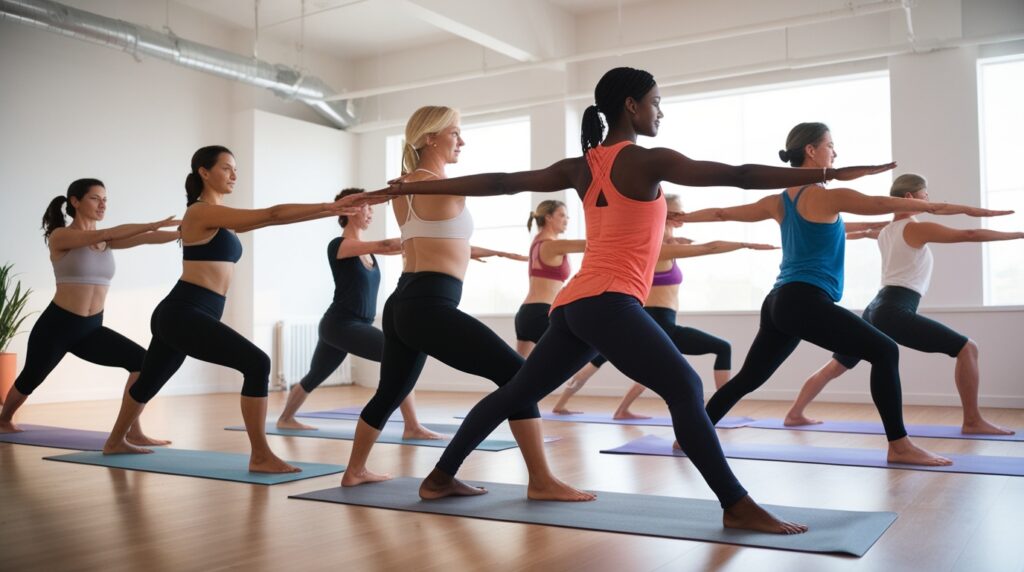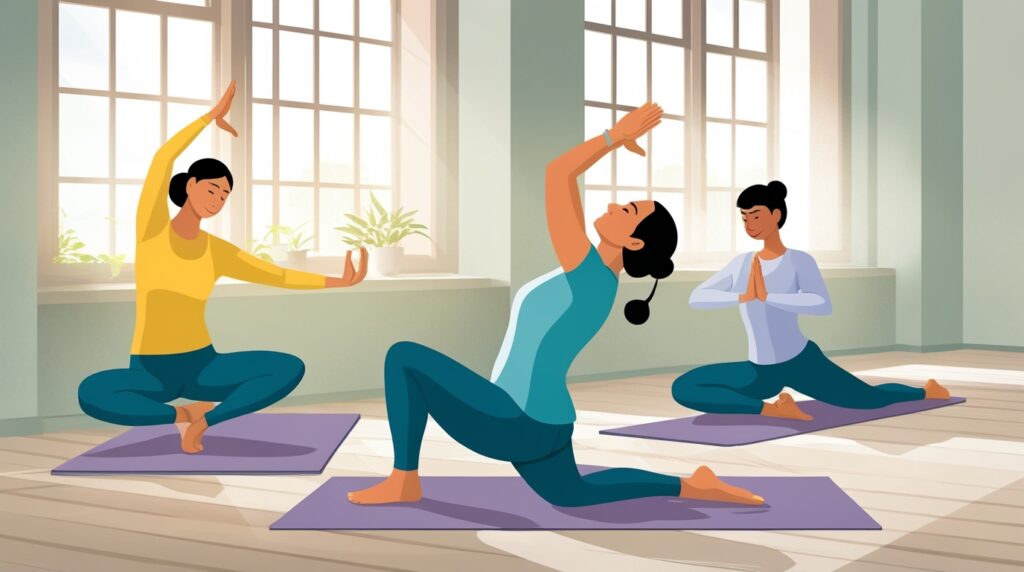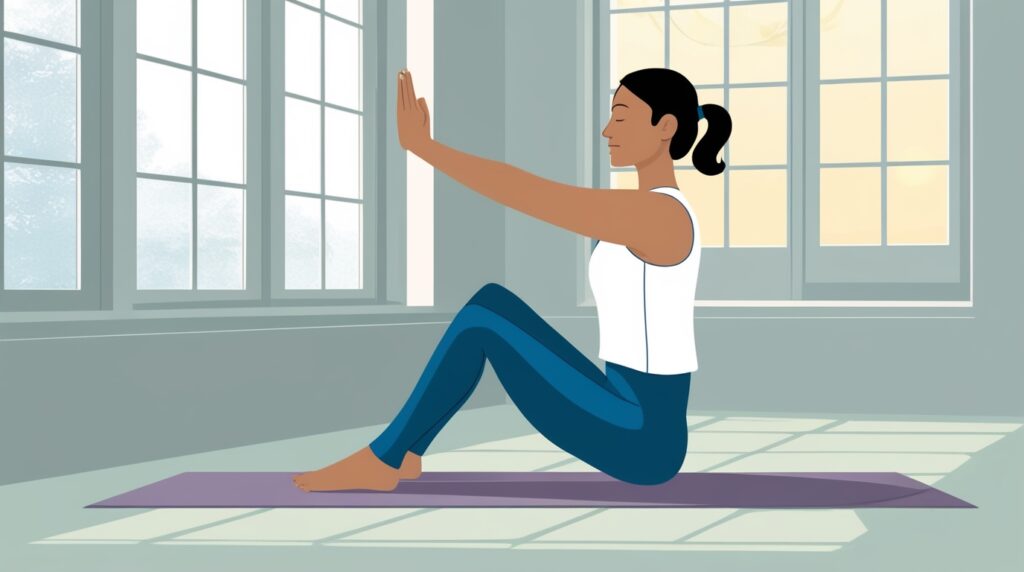Warm yoga is an increasingly popular practice that offers the perfect balance between traditional yoga and hot yoga. Unlike hot yoga, which takes place in extreme heat, warm yoga is performed in a moderately heated room, typically around 80-90°F (27-32°C). This gentle warmth helps loosen muscles, improve circulation, and enhance flexibility without the intensity of high-temperature environments. Whether you are a beginner or an experienced yogi, incorporating warm yoga into your routine can bring immense benefits to your physical and mental well-being.
Warm Yoga
Benefits of Warm Yoga
Practicing this yoga provides numerous benefits that contribute to overall health and fitness. Here are some of the key advantages:
- Increases Flexibility: The warm environment allows muscles to relax and stretch more easily, reducing the risk of injury.
- Boosts Circulation: The heat promotes better blood flow, delivering oxygen and nutrients more efficiently to muscles and tissues.
- Enhances Detoxification: Sweating helps flush out toxins from the body, leaving you feeling refreshed and revitalized.
- Supports Joint Health: The gentle warmth alleviates stiffness and enhances mobility, making it ideal for those with arthritis or joint pain.
- Improves Mental Clarity: The meditative aspect of yoga, combined with warmth, helps reduce stress and promote relaxation.
- Strengthens Muscles: Holding poses in a heated environment increases endurance and strengthens muscles without excessive strain.
By incorporating this yoga into your routine, you can enjoy a balanced practice that nurtures both the body and mind.
How to Prepare for a Warm Yoga Session
To get the most out of your yoga practice, proper preparation is essential. Follow these steps to ensure a smooth and enjoyable experience:
1. Choose the Right Clothing
Wear lightweight, moisture-wicking clothing to keep your body cool and comfortable. Avoid heavy or restrictive fabrics, as they may trap heat and make movements uncomfortable.
2. Stay Hydrated
Since warm yoga encourages sweating, it’s important to drink plenty of water before and after your session. Dehydration can lead to dizziness and fatigue, so make sure to replenish lost fluids.
3. Use a High-Quality Yoga Mat
A non-slip, absorbent yoga mat is crucial for maintaining stability during poses. Look for mats designed for heated environments to prevent slipping due to sweat.
4. Bring a Towel
Having a small towel on hand can help you wipe away sweat and keep your hands and feet dry, reducing the risk of slipping.
5. Arrive Early
Arriving a few minutes before class allows you to adjust to the warm temperature and settle into a relaxed mindset before starting your practice.
By following these preparation tips, you can fully enjoy the benefits of warm yoga without discomfort or interruptions.
Best Warm Yoga Poses for Flexibility and Strength
Warm yoga incorporates a variety of poses that target different muscle groups, improving flexibility, strength, and relaxation. Here are some of the best warm yoga poses to include in your practice:
1. Downward Dog (Adho Mukha Svanasana)
- Stretches the hamstrings, calves, and spine.
- Strengthens the arms and shoulders.
- Enhances circulation and reduces tension in the back.
2. Warrior II (Virabhadrasana II)
- Builds lower body strength and endurance.
- Improves balance and stability.
- Opens the hips and chest for better flexibility.
3. Triangle Pose (Trikonasana)
- Stretches the legs, spine, and shoulders.
- Strengthens the core and improves posture.
- Enhances digestion and stimulates internal organs.
4. Pigeon Pose (Eka Pada Rajakapotasana)
- Deeply stretches the hip flexors and glutes.
- Relieves lower back pain and sciatica.
- Helps release emotional tension stored in the hips.
5. Seated Forward Bend (Paschimottanasana)
- Stretches the hamstrings, spine, and lower back.
- Calms the mind and reduces stress.
- Stimulates the digestive system and promotes relaxation.
Practicing these poses regularly in a warm environment can enhance your overall flexibility and strength while promoting relaxation and well-being.
Warm Yoga vs. Hot Yoga: Which One is Right for You?
Many people wonder about the difference between warm yoga and hot yoga. While both practices involve practicing yoga in a heated room, there are key differences that can help you determine which one suits your needs best.
Warm Yoga:
- Temperature: 80-90°F (27-32°C)
- Focuses on gentle heat for improved flexibility and relaxation.
- Suitable for beginners and those sensitive to high temperatures.
- Encourages mindfulness and stress relief without excessive sweating.
Hot Yoga:
- Temperature: 95-105°F (35-40°C)
- More intense practice, leading to significant sweating and calorie burn.
- Requires higher endurance and hydration.
- Ideal for those looking for a challenging, detoxifying workout.
If you’re new to heated yoga or prefer a less intense environment, warm yoga is a great choice. It provides all the benefits of heat-assisted stretching without the overwhelming intensity of hot yoga.
Final Thoughts on Warm Yoga
Warm yoga is a fantastic way to improve flexibility, strength, and mental clarity in a comfortable, heated environment. It offers a gentle yet effective approach to yoga, making it accessible to practitioners of all levels. By preparing properly, practicing beneficial poses, and understanding its advantages over hot yoga, you can fully enjoy the transformative effects of warm yoga on your body and mind. Whether you’re seeking relaxation, better flexibility, or a low-impact workout, warm yoga is a great addition to your fitness routine.












